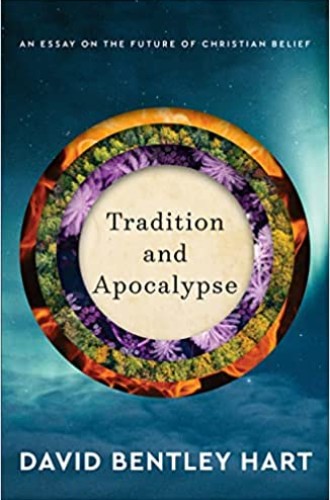David Bentley Hart’s apocalyptic view of tradition
Hart believes that John Henry Newman and those quick to invoke him rely too much on a gaze backward into the past.
David Bentley Hart does not get out of bed in the morning to take on small projects. In his most recent volume (which is, as usual, mischievously polemical, dauntingly erudite, and verbose), he sets his sights on John Henry Newman’s conception of tradition as expressed in his landmark work, An Essay on the Development of Christian Doctrine (1845, revised 1878), the publication of which precipitated the Victorian scholar’s conversion from Anglicanism to Catholicism and arguably now serves as a major pillar of the Catholic Church’s self-understanding. The Second Vatican Council did not really change church teachings, Newmanists insist, so much as it effected the development of doctrine.
Hart scoffs even as he admires Newman’s intelligence—seconded and improved upon, Hart thinks, by the French philosopher Maurice Blondel—in sizing up the theological problem embedded in the “incorrigibly obscure” concept of tradition. In short: How can we simultaneously assure ourselves of “an essential immutability in Christian confession while also offering . . . a credible apologia for all the transformations through which that confession has manifestly gone over the centuries?” Put differently, how might the faithful invoke Vincent of Lérin’s bold phrase ubique, semper, et ad omnibus (everywhere, always, and universally), while also recognizing significant transmutations over time—say, the Catholic Church’s ostensibly novel embrace of religious liberty and interfaith dialogue at Vatican II or even, going back much earlier, Tertullian’s notion of trinitas or the innovative use of homoousion (consubstantial) at the Council of Nicaea?
Hart charges that, in the final analysis, Newman’s work has saddled Christians with a beguiling tautology. It beguiles because Newman’s argument appears as a syllogism—a long chain of sound, careful deductive steps—but says little more than that what counts as acceptable teaching is what the church has decided to designate as such, and what it has designated as such must be acceptable teaching. It further beguiles, Hart believes, because it rests throughout on a misleading organic metaphor. Newman likens the church to a living organism (such as an acorn becoming a tree, to invoke a shopworn analogy), when in fact it is a complex historical entity buffeted by and encumbered with numerous accidents of time and place that are not necessarily essential to its being, even if they are often obdurately held to be so.





